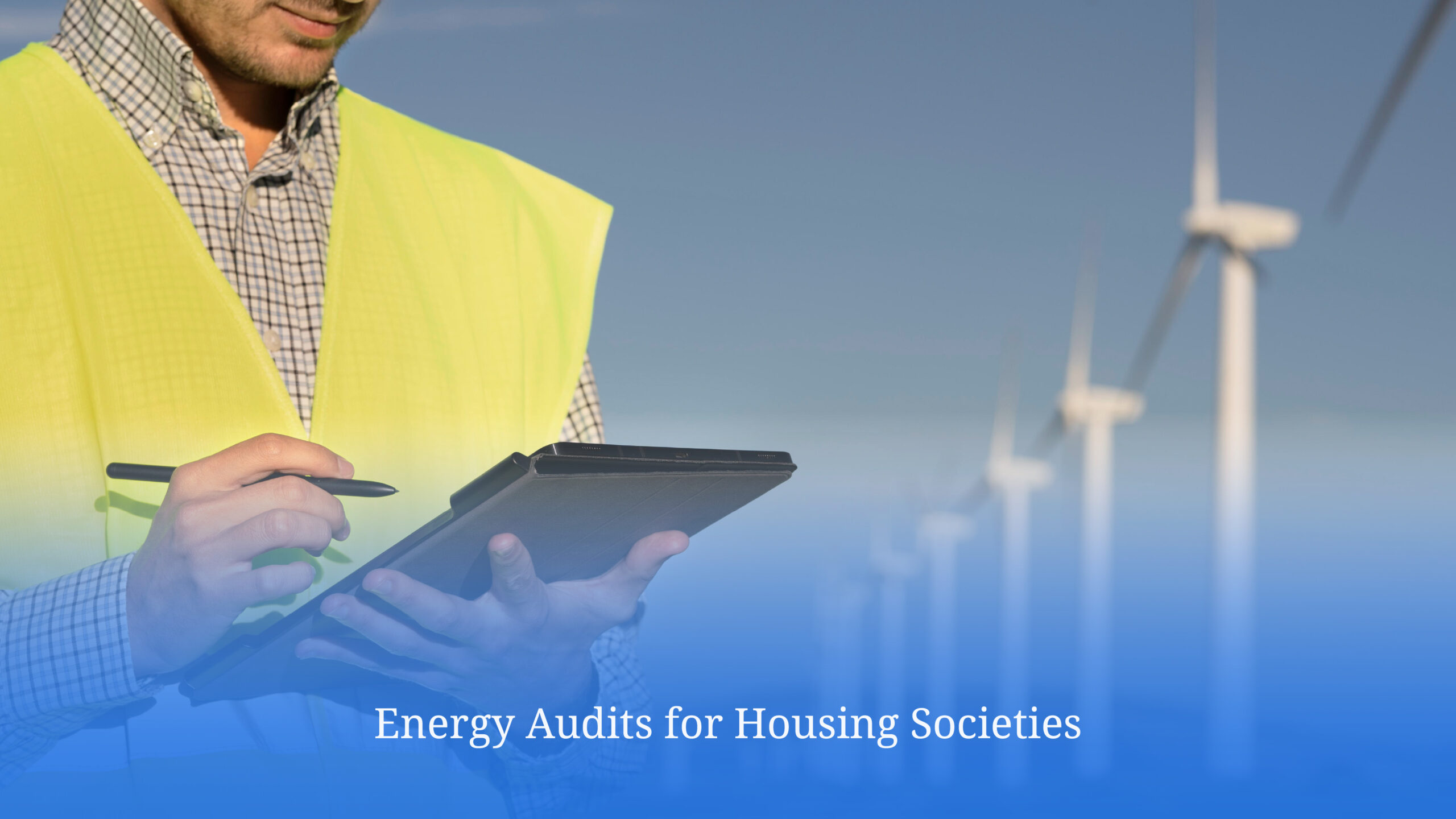Energy Audits for Housing Societies: A Pathway to Sustainable Living

In a world where sustainability and cost-efficiency are becoming essential, housing societies are facing increasing pressure to optimise energy use. Energy bills are one of the largest recurring expenses, and the need to manage consumption efficiently is critical. This is where an energy audit comes in. It’s an essential tool that helps housing societies reduce energy costs, minimise waste, and create a more sustainable environment.
What Are Energy Audits?
An energy audit is essentially an assessment that evaluates how a building uses energy. It identifies areas where energy is being wasted and offers recommendations for improvements. It’s the first step toward a more energy-efficient and sustainable future for housing societies.


What Does an Energy Audit Involve?
An audit typically begins with a review of energy consumption, followed by a site inspection of systems like lighting and HVAC. The result is a report that highlights inefficiencies and suggests how to improve. Here are the three common types of audits:
- Level 1: A basic review of energy bills to identify immediate areas for savings.
- Level 2: A more detailed inspection, including on-site assessments and a deeper dive into system performance.
- Level 3: The most detailed audit, involving advanced diagnostic tools to provide a comprehensive plan for energy optimisation.
The Energy Audit Process
The process of energy audit involves a thorough evaluation of a building’s energy use to identify inefficiencies and suggest improvements. It typically unfolds in a few key steps:
- Data Collection: Gathering energy consumption data, like utility bills, to get a clear picture of usage patterns.
- On-Site Inspection: A walkthrough to evaluate the building’s energy systems, like lighting, HVAC, insulation, and more.
- Measurements and Diagnostics: Using tools to track energy consumption in real-time and pinpoint inefficiencies.
- Report and Recommendations: A report is created, offering insights and clear, actionable suggestions for improvement.
- Implementation: The final step involves planning and putting the recommendations into action.
Key Benefits of Energy Audits
Why should housing societies conduct an energy audit? Here are the main advantages of an energy audit:
- Cost Savings: Identifying inefficiencies means reducing unnecessary energy use, which leads to lower utility bills.
- Energy Efficiency: With recommendations from an audit, societies can enhance their energy use, leading to long-term savings.
- Improved Comfort: More efficient systems provide better air quality, lighting, and overall comfort for residents.
- Environmental Impact: Reducing energy consumption directly lowers the building’s carbon footprint, contributing to a greener world.
- Regulatory Compliance: Many regions require energy efficiency regulations. Audits help societies stay compliant and avoid potential fines.
Why Lighting Is Often the First Target
When it comes to energy use, lighting is often the biggest culprit. In many housing societies, outdated lighting systems use far more energy than necessary. By switching to more energy-efficient solutions, like LED lighting or motion-sensing lights, societies can drastically reduce their consumption. Motion-sensing lights, which automatically turn on when a space is occupied and dim when it’s not, help eliminate unnecessary energy use, particularly in less-trafficked areas. In fact, lighting can account for up to 30% of a building’s total energy usage. That’s why it’s often one of the first areas targeted for improvement in an energy audit.
How Smart Lighting Supports Audit Recommendations
Smart lighting systems take energy efficiency to the next level. They aren’t just about replacing old bulbs; they offer control, automation, and optimisation, ensuring that energy is only used when needed. Here’s how smart lighting works:
- Automation and Scheduling: At sunset and sunrise, for example, lights are programmed to switch on and off. This guarantees that energy is not squandered when it is not needed.
- Occupancy Sensors and Motion-Sensing Lights: Occupancy sensors and motion-sensing lights detect movement, adjusting lighting based on room occupancy. Lights turn dim when unoccupied, helping conserve energy in less-trafficked areas.
- Dimming and Adaptive Lighting: Smart systems adjust light levels based on occupancy and ambient light, using motion sensors to ensure proper illumination. This minimises energy use by avoiding excessive lighting when not needed.
- Data Monitoring: Real-time tracking helps facility managers monitor energy usage, adjust settings, and get insights into how lighting systems are performing.
PSC’s Role in Enabling Energy Efficiency
Our platform, Planet SIM, offers an ideal solution for housing societies looking to make the most out of their energy audits. With Planet SIM, societies can easily automate lighting systems, optimise energy usage, and track real-time data.
Planet SIM empowers facility managers to:
- Automate lighting schedules and reduce unnecessary usage.
- Monitor energy consumption in real-time and adjust settings for maximum efficiency.
- Get actionable insights through custom reports and dashboards, making it easier to track energy-saving progress.
By integrating our platform’s smart lighting management features, housing societies can bring their energy audit recommendations to life. This way, you can improve sustainability and reduce operational costs.
Conclusion: A Step Toward a Greener Future
Energy audits play a key role in managing energy consumption within housing societies. Understanding the importance of energy audits helps societies identify inefficiencies and take action to reduce costs and improve sustainability. When paired with smart technologies like our lighting solutions, these audits provide a clear path to a more energy-efficient future.
Explore how Planet SIM can help your society optimise energy use and create a greener, more sustainable environment today!




